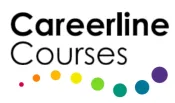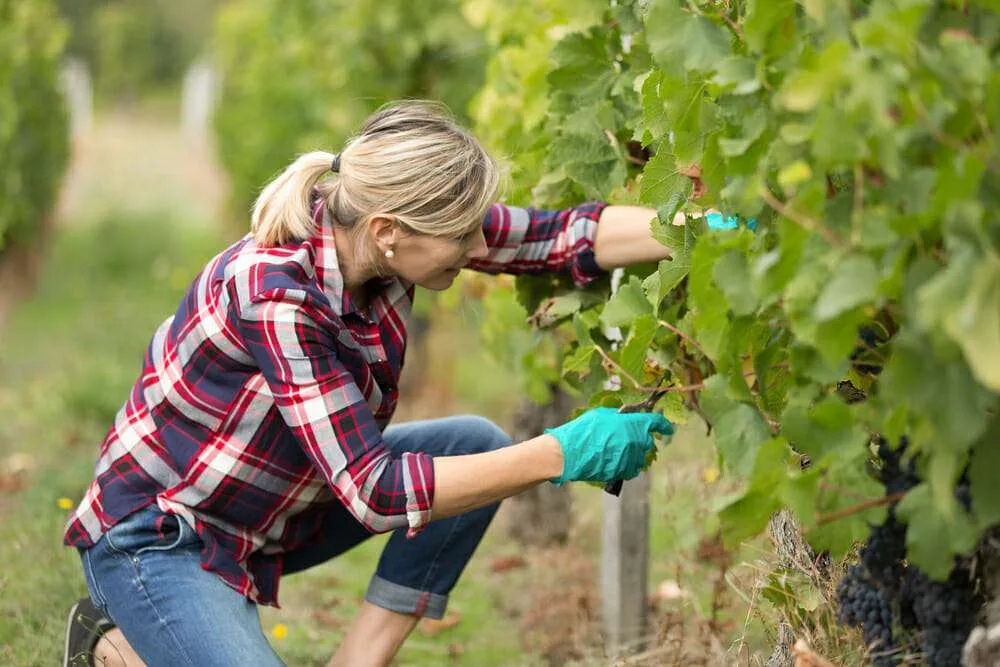Study the science of growing grapes and making wine together in this unique course
This course bundles two 100hr courses 1. Viticulture and 2. Oenology (Wine making) Courses together at a discounted rate.
Course Aims:
- Choose an appropriate site for a vineyard.
- Simple Soil tests
- Measure pH
- Determine water content of soil.
- Choose appropriate grape varieties for different situations.
- Develop criteria to be considered when selecting which grape varieties to grow.
- Devise a procedure to establish a vineyard.
- Specify the techniques used in the culture of grape vines.
- Specify a procedure for harvest and post-harvest treatment of grapes.
- Formulate marketing strategies for vineyard products.
- Explain the basic principles of wine making.
- Discuss the scope of winemaking and the set of characteristics.
- Recognize the scientific processes of fermentation and simple control factors.
- Investigate the practical tasks and required equipment needed for making wine.
- Explain how yeasts and other flavor affecting factors can be managed to impact the final wine product.
- Comprehend the scope of different wine types arising from various grape varieties and learn how they are classified.
- Explain wine sensory science and how consumers interact with wines.
- Explain unique processes used to make white and sparkling wines.
- Investigate unique processes used to make red and rosé wines.
- Explain how to make fortified wines and spirits.
- Understand the importance of correct storage and how it prevent spoilage and enhances maturity.
Course Outline
There are 2 modules in this course:
I. Viticulture
1. Introduction
-
- Nature and scope of the viticulture industry both locally and world wide
- Global viticulture
- Major winegrowing areas around the world
- The grape; genera and species
- Rootstocks
- Classification of grape varieties
- Table grapes
- Wine grapes
- Dried fruit
- Juice grapes
- Canned grapes
2. Climate and Soils
-
- Suitable climate and soil conditions for vineyard site establishment
- Temperature; temperature calculations; latitude-temperature index and degree days
- Sunlight
- Rainfall
- Soil; soil types and wine regions; understanding soils; texture; characteristics; soil structure; chemical characteristics of soils including pH and nutrient levels
- Understanding plant nutrition
- Soil water content
- Simple soil tests; naming the soil
- Problems with soil; erosion; salinity; structural decline; soil acidification; chemical residues
3. Selecting Grape Varieties
-
- Appropriate grape varieties for different situations.
- Grape types
- Selection considerations
- Matching the variety with the site
- Varietal characteristics
- Selecting wine grapes
- Yield
- Reviewing important varieties; chenin blanc; chardonnay; semillion; muscat ottonel; muscadelle; gewurztraminer; cabernet sauvignon; carignan
- Vitis rotundifolia
- Wine grapes; raisin grapes; juice grapes
- Importance of rootstocks
- Purchasing plants
- Phylloxera
4. Vineyard Establishment
-
- Procedure to establish a vineyard
- Vineyard planning
- Site planning
- Vineyard layout
- Site preparation
- Planting the vines
- Vine spacing
- Shelter belts
- Crop infrastructure
- Equipment
5. Grapevine Culture Part A (Training & Pruning)
-
- Techniques used in the culture of grape vines
- Pruning and training vines
- Shoot spacing
- Bud numbers
- Vine spacing
- How much to prune
- Machine pruning
- Summer pruning
- Combination pruning
- Pruning sultana vines
- Trellising
- Trellis construction
- Guyot system
- Geneva double curtain system
- Head training
- Cordoning
- Kniffen systems
- Umbrella kniffen system
- Pergola training system
6. Grapevine Culture Part B (Weeds, Pests & Diseases)
-
- Types of weeds
- Controlling weeds
- Safety procedures when using agricultural chemicals
- Laws and guidelines
- Types of chemicals
- Weed management before planting
- Weed management in new vineyards
- Weed management in established vineyards
- Integrated pest management
- Pest control in vineyards
- Grape berry moth
- Grape mealy bug
- Grape leaffolder
- Grapevine rust mite
- Grape blossom midge
- Flea beetles
- Birds and arge animals
- Disease control in vineyards
- Fungal diseases; rots; mildew; eutypa dieback etc
- Bacterial diseases
- Viruses
- Organic culture of grapes; organic pest and disease control
- Companion plants
- Managing environmental problems including air, water, damage, frost, hail, wind and shade
- Water management; runoff; water saving
- Grape clones and varieties
7. Grapevine Culture Part C (Irrigation & Feeding)
-
- Irrigating and feeding grapes
- Excessive irrigation
- Seasonal effects of irrigation
- Drip irrigation
- Monitoring and timing
- Feasibility of irrigation
- Design considerations
- Soil and water
- Measuring water available to plants
- Calculating permanent wilting point
- Calculating field capacity of a vineyard
- Available moisture range
- Measuring air filled porosity
- Tensiometer
- Estimating water
- Rate of growth
- Climate
- Drainage in vineyards; improving subsoil and surface drainage; subsurface drainage
- Soil fertility; choice of fertilizer; timing of application; fertigation
8. Improving Grape Quality
-
- Ways to ensure or improve grape quality.
- Plant stock
- Crop management
- Post harvest impact on quality
- Improving flower and fruit set
- Second set
- Girdling
- Berry thinning
9. Harvesting & Selling
-
- Procedure for harvest and post-harvest treatment
- Harvesting
- Testing for ripeness
- Influence of weather
- Harvesting techniques
- Selling grapes
- Vineyard resume
- Selling grapes
- Marketing contracts
- Selling online
- Developing a marketing plan
- Advertising
- Market research
- Legal considerations with marketing
10. Wine
-
- Basic principles of wine making
- Overview of winemaking process
- Production principles
- Fermentation
- Making white wine
- Making red wine
- Methods
II. Winemaking
1. Scope and Nature of Oenology
-
- Introduction
- Global Wine Production
- Global Wine Consumption
- What Is Involved in Winemaking
- Wine Making Terminology
- Testing, Tasting and Monitoring
- What Can Go Wrong In Winemaking
- Alcohol And Health
2. Fermentation Science
-
- Fermentation
- Carbohydrates
- Microbiology
- Enzymes
- Quality control
- Malolactic fermentation
- Secondary fermentation
3. The Winemaking Process
-
- Outline of the winemaking process
- Clarification and Stabilization
- Preservation
- Methods to determine sugar and Sulfur dioxide levels
4. Factors affecting Grape Characteristics
-
- Fruit characteristics affecting wine
- Fermentation preparation
- Effects of yeasts in winemaking
- Managing yeasts
- Methods to determine alcohol content, chemical and microbial stability
- Determine pH
- Inoculum of yeast
5. Wine Classification
-
- Types of wines
- Selecting wine grapes
- Varieties
6. Sensory Science & Evaluation
-
- Wine sensory science
- Determine consumer preference
- Types of senses
- Wine evaluation
- Wine food interaction
7. Production of White Wine and Sparkling Wines
-
- Harvesting Grapes
- Crushing the Grapes
- Managing the Must
- Sparkling Wines
- The Champenois Method
8. Production of Red Wines and Rosé Wines
-
- Harvesting and Crushing for Reds
- Fermentation
- Extracting Colour
- Thermovinification
- Getting a Wood Flavour
9. Production of Spirits
-
- Introduction to Distillation
- Classification of Spirits
- Spirit Groups
- Liquors and Liquor Groups
- Aperitifs
- Sherry and Types of Sherry
- Vermouth
- Port and Types of Port
10. Storage and Aging of Wines
-
- Different Storage Methods
- Maturation
- Causes of Spoilage
When you have completed the lessons of your Certificate course, you will be given the option of taking the optional exam. It’s okay if you don’t want the exam, we still issue your Careerline Certificate. For Advanced Certificates however, the exam is compulsory (per module) and are included in the course fee.

